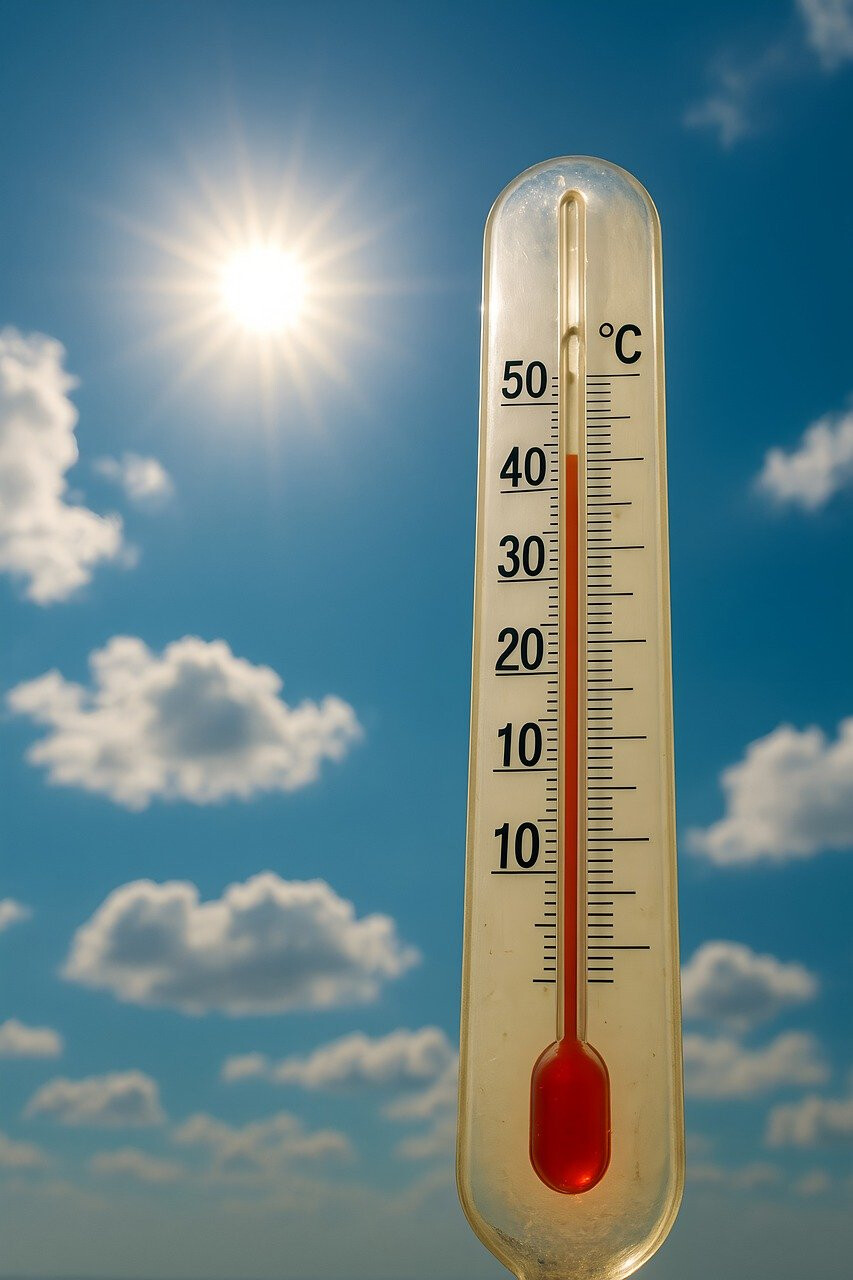
In June 2024, the eastern United States is grappling with a record-breaking heatwave. Life-threatening heat began over the weekend, peaking on June 23rd and 24th, putting major cities like Washington D.C., Baltimore, Philadelphia, and New York City in emergency situations. Notably, New York City's Central Park broke its 137-year-old record for the highest temperature since 1888, once again highlighting the severity of climate change.
Record Temperature Increases and the Threat of the 'Heat Dome'
The most prominent feature of this heatwave is the deadly surge in temperatures. New York City's temperatures are forecast to approach 40 degrees Celsius (104 degrees Fahrenheit), with Central Park recording 35.6 degrees Celsius (96.1 degrees Fahrenheit), surpassing its all-time high. Washington D.C. is also expected to experience a heat index of up to 43.3 degrees Celsius (110 degrees Fahrenheit), prompting authorities to actively encourage citizens to use cooling centers.
The unprecedented heatwave is attributed to the 'Heat Dome' phenomenon. A heat dome occurs when a high-pressure system lingers over a specific area for an extended period, trapping hot air and continuously raising temperatures. As a result, daytime temperatures are breaking records daily, and even at night, temperatures aren't dropping sufficiently, leading to heat accumulation that severely threatens citizens' health and safety.
The National Weather Service (NWS) announced that approximately 160 million people across 29 states in the eastern U.S. are under heat warnings or advisories, cautioning that such a prolonged and high-risk heatwave, which doesn't cool down at night, is a very rare occurrence. They emphasized that anyone lacking air conditioning or sufficient hydration could be severely affected, urging extreme caution.
The Heatwave's Hidden Killer, and Vulnerable Populations
New York City Mayor Eric Adams characterized this heatwave as "not just uncomfortable but can be brutal and dangerous," urging citizens to exercise extreme caution. He added that 500 people die from heat in New York annually, emphasizing that heatwaves are no longer just a natural phenomenon but a serious disaster. Heat-related deaths predominantly occur among socially vulnerable groups with limited access to cooling facilities, such as the elderly, those with chronic illnesses, and low-income individuals. These groups are susceptible to heatstroke and heat exhaustion, and the inability of temperatures to drop at night is particularly detrimental to their physical recovery, posing a fatal risk to their health.
In response, local government officials are repeatedly urging the elderly and those with limited access to cooling to stay hydrated and use designated shelters if necessary. New York City is making multifaceted efforts to reduce heat-related deaths, including operating free cooling centers and strengthening in-home care services for vulnerable populations. Washington D.C. is also expanding its cooling center operations and increasing patrols in heat-vulnerable areas, dedicating all efforts to ensuring citizen safety.
Society-Wide Emergency Measures and Economic Repercussions
This heatwave is affecting not only citizens' health but also various aspects of society. As a safety measure, some trains have halted mid-operation, and Amtrak, the national passenger railroad company, announced that trains would operate at reduced speeds due to high-temperature restrictions. This is because train rails can deform under intense heat, demonstrating the direct impact of the heatwave on the transportation system. Air travel may also experience disruptions, which is expected to cause significant inconvenience for citizens during the summer vacation season.
Furthermore, urgent measures are being taken to protect outdoor workers' health. Health experts have strongly urged employers to adjust working hours for outdoor laborers and ensure sufficient rest and hydration breaks. Police authorities in Raleigh, North Carolina, and Washington D.C. have announced measures to protect officers deployed outdoors, suggesting that the heatwave also poses challenges to maintaining public services. In industries with extensive outdoor work, such as construction, measures like shortened working hours and extended breaks are being implemented, but an unavoidable decline in productivity and economic losses are anticipated.
The New Reality of the Climate Change Era
This heatwave in the eastern United States is no longer regarded as an exceptional weather phenomenon but rather as a new reality of the climate change era. Experts warn that global warming is increasing the frequency and intensity of heatwaves worldwide, and this trend is expected to worsen. The "urban heat island effect" also further raises temperatures in urban areas, exacerbating the impact of heatwaves.
The U.S. East Coast is at a critical juncture to explore more proactive responses to climate change in the wake of this heatwave. Beyond just emergency measures for heatwaves, there's an urgent need for sustainable long-term solutions, such as expanding urban green spaces, implementing energy-efficient building designs, and strengthening social safety nets for vulnerable populations. Citizens also need to be aware of heatwave preparedness guidelines for their personal safety and show concern for their neighbors, fostering a communal effort. It is hoped that this heatwave will serve as a turning point, raising awareness about the threat of climate change across the entire East Coast community and leading to tangible changes.
[Copyright (c) Global Economic Times. All Rights Reserved.]




























